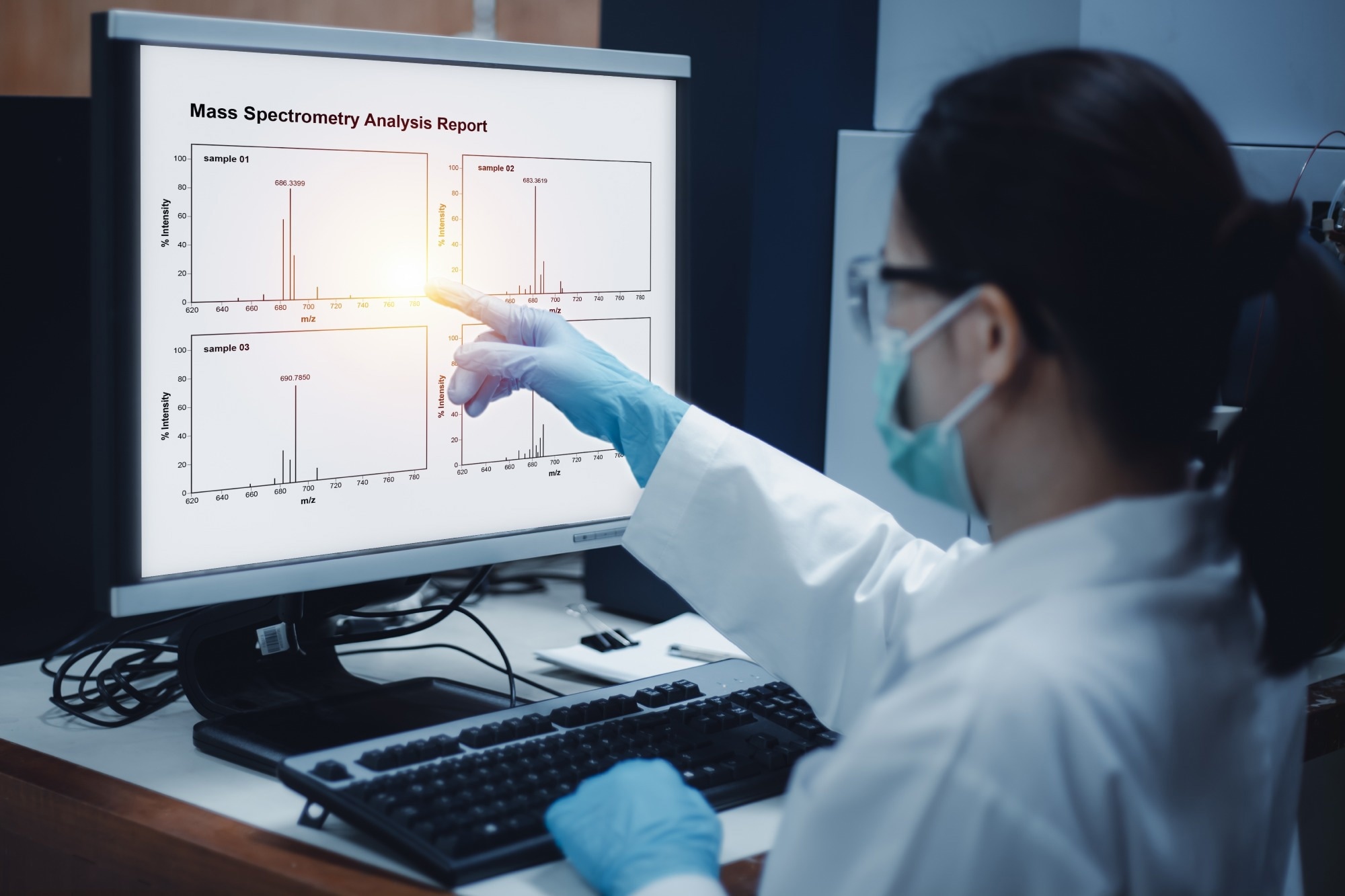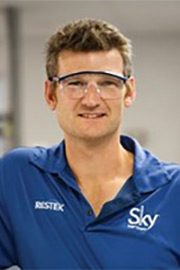Tandem quadrupole mass spectrometry is a promising and effective replacement for traditional magnetic sector instruments in analyzing persistent organic pollutants (POPs). The expert panel discussion highlights the advantages, applications, and regulatory acceptance of MS-MS for POP analysis.
Could you introduce yourself and explain a little bit about your career progression?
Coreen Hamilton:
I am an Analytical Chemist with a BSc from McGill University and a Ph.D. from the University of Alberta. I've worked at SGS Axys, formerly Axys Analytical, for many years, starting in 1984.
My specialization lies in trace organic analysis and analytical method development. My team and I have developed numerous methods throughout my career, some of which have become the basis for EPA methods. We have also submitted the original application to the US EPA Alternate Test Procedure (ATP) program using GC-MS/MS for dioxins analysis.
Chris English:
I am the Innovations Laboratory Manager for Restek Corporation, managing a team of analytical chemists in the laboratory. Before taking charge of the laboratory, I spent several years working as an Environmental Applications Chemist, where my contribution was instrumental in developing Restek's current line of GC columns.
Before joining Restek, I operated various GC systems and conducted method development work and sample analysis for a global laboratory testing network. I hold a BS in Environmental Science from St. Michael's College in the United States.
Jordan Stubleski:
Currently, I hold the position of Research Scientist at Wellington Laboratories and use advanced instrumentation to develop and validate quantitative methods for analyzing environmental contaminants using GC.
I work extensively with high-resolution mass spectrometry, including QToF-platform techniques and tandem quadrupole-based systems. Through my research, I evaluate the performance of these instrument platforms to ensure the production of reliable and robust environmental data. The ultimate goal of my work is to establish validated analytical methods within Wellington's ISO 17025 accreditation-supported quality system.
I completed my Ph.D. in Analytical Chemistry from Örebro University in Sweden, following the successful completion of my Master's Degree in Forensic Chemistry from Penn State University, under the guidance of Dr. Frank Dorman.
Frank Dorman:
Currently, I'm a resident scholar at Dartmouth College in Hanover, New Hampshire. At Dartmouth, I am actively involved in teaching analytical chemistry to both graduate and undergraduate students. In addition to my role at the college, I serve as the senior global market manager for the GC-MS program at Waters Corporation. I manage the research-focused environment market, foster external collaborations, and work closely with the R&D teams on new product development.
Before joining Dartmouth, I was an Associate Professor in the Department of Biochemistry and Molecular Biology at Penn State University. My interests span a broad range, including gas and liquid chromatography, fundamental characterization, instrumentation, and column development, as well as mass spectrometry and atomic spectroscopy applied to trace analysis in complex matrices.
Dioxins and related POPs have historically been analyzed using magnetic sector-based high-resolution GC-MS. Could you articulate some of the reasons for this usage, considering that it is one of the few applications for which this technology platform is still employed in environmental and food analysis?

Image credit: S.Singha/Shutterstock.com
Coreen Hamilton:
In the 1980s, people began to understand the severe effects of dioxins on humans and the environment. As a result, there was a growing need to monitor and regulate these compounds, which led to the involvement of the US EPA. At that time, magnetic sector instruments were considered the most suitable for achieving low detection limits.
Consequently, there was a strong focus on developing and utilizing magnetic sector instruments. When the EPA decided to regulate these substances, it carried significant implications for companies discharging effluent, as non-compliance could result in fines and legal prosecution. Therefore, it was crucial to establish a methodology capable of withstanding court challenges. The intention was to employ this method for regulatory permits, ensuring that any discharge exceeding the set limits would face legal consequences.
They needed a method they could confidently rely on without having data and results dismissed in court, so they opted for the magnetic sector. It provided the highest sensitivity and offered a high degree of selectivity, virtually eliminating the chances of false positives when using that technology. Hence, Method 1613 was developed with various built-in checks, including resolution, retention time, and isotope ratio checks. All these measures were implemented to ensure the ability to withstand any challenges to the data generated by the method.
Frank Dorman:
There is a historical reason why they are still used today. If we look back, as Coreen mentioned, to perhaps even the late 1970s and 1980s when these methodologies were being developed, there was not much competition regarding the necessary sensitivity and specificity because these samples had relatively low concentrations.
Although the sample preparation procedure is extensive, the samples are usually challenging. The other GC-MS systems available as competitive alternatives during that time could not meet the demanded mass spectrometry performance requirements for dioxin analysis. Therefore, this led us to utilize the sectors at that time, as they were capable of meeting the necessary criteria. To truly understand why we still use them today, it is essential to look back at history and consider the technological landscape of that era.
What are some pros and cons of using a GC high-res magnetic sector instrument, and what is the experience like?
Jordan Stubleski:
I will start with the pros, the main one being that it is a well-known and widely accepted technology. The magnetic sector is the instrument of choice for many labs because it is the approved quantification technique in EPA Method 1613.
There is considerable experience and comfort with this instrument since it is the primary tool used in commercial labs. It provides high-resolution data to resolve most isobaric interferences when operating with 10,000 mass resolving power as required in most all regulatory methods.
The cons, however, are a bit more extensive due to its older technology. The most significant drawback is its limited number of possible target analytes, attributed to slower scan speed and lower sensitivity. The slower scan speed can result in multiple drawbacks. For example, targeting too many masses in a single function decreases resolution and sensitivity, and acquiring analytes with widely different mass ranges in one function becomes challenging.
This is not an issue for dioxin and furan analysis, but it can be for other analyte groups like BFRs. You may struggle to obtain enough data points per peak, making it difficult to gather sufficient data across narrow peaks. This issue can even cause the valley between the 2378 TCDD and its nearest neighbor to rise when smoothing the data.
Targeting more than one compound class per injection becomes challenging, sometimes requiring multiple separate analysis of the same extract to quantify different POPs classes accurately. Due to decreased sensitivity, a splitless injection is necessary, increasing the matrix introduced onto the column. In my experience, there is also more significant downtime when issues arise in the magnetic sector due to the complexity of the source.
Frank Dorman:
Having trained numerous graduate students over the years, I have become acutely aware of magnetic sector instruments' "personalities" and the training time required to operate such instruments proficiently. In the past, we considered this a point of pride, and many individuals on this panel likely share that sentiment, boasting, "Yes, I can operate and tune them." However, this can pose a real obstacle in the modern era, especially when training new scientists.
It is unrealistic to expect a relatively inexperienced individual to produce high-quality data quickly or feel completely comfortable managing all the associated maintenance issues with a high-resolution sector instrument.
Given that many of the methods used in commercial laboratories, such as magnetic sector technology, were developed quite a long time ago, are there any limitations in these methods that could be addressed through updates?
Chris English:
Yes, the first notable aspect in 1613 is the column dimensions. We observe a 0.32 millimeter ID column that produces a nicely spread peak shape, which is advantageous for high-resolution purposes. However, we can now capitalize on a smaller ID column when dealing with MS-MS, where higher scan speeds are available. By doing so, we can achieve faster runtimes. For instance, considering that dioxin necessitates approximately 175,000 plates to separate the 1237-TCDD and 1238-TCDD from 2378-TCDD, we can benefit from use of other instrument platforms.
Whether we consider a 60-meter, 0.25-millimeter column that would generate approximately 264,000 plates or opt for a 40-meter, 0.18-millimeter column that would still yield 220,000 plates, we would have more resolution than necessary regarding chromatography. These aspects of the method stand out to me, and they present opportunities for improvement, such as achieving faster runtime and enabling a split injection rather than a splitless injection. Split injection would result in even better peak shapes (narrower) than obtained with the more traditional splitless injection.
Jordan Stubleski:
Moreover, I would be interested in considering the increase in versatility associated with the detectors on the Waters instruments, as you can use both GC and LC inlets. We could include more target analytes per injection, therefore enabling the analysis of extended ranges of target compounds. Perhaps we could even contemplate the EPA expanding the list in the EPA 1613 method to include PCBs, PCNs, or other planar compounds that are also likely to be present in environmental matrices.
What barriers do these methodologies have to overcome in commercial laboratories, or why is there sometimes reluctance in commercial laboratories to adopt new methodologies?
Coreen Hamilton:
Regarding transitioning from a magnetic sector to MS-MS, laboratories are clear that operating and maintaining the instrumentation will be easier. Laboratories see this as a bonus. However, the issue arises with customer expectations regarding how things are done.
For instance, in our case, we run dioxin using both magnetic sector and MS-MS, and convincing clients to switch technologies is not a straightforward conversation, as, until now, the only regulatory method for dioxin has been the magnetic sector. Therefore, those with permits tied to it cannot simply switch. This is precisely why we submitted the ATP.
Another factor is that clients are sometimes simply reluctant to switch. They may have data they have held onto for years or even decades and are hesitant to make any changes. This can lead to situations where it seems like they are discharging more material or their data sets do not match, among other things. From the lab's perspective, it is not our reluctance but rather the process of convincing users that the new data will be equivalent or even better and will serve their data collection purposes effectively. Therefore, it becomes an ongoing task of selling and persuading. We have primarily overcome this challenge by offering a subset of samples to be run both ways, as the same extract can be prepared and analyzed from different angles.
This was the essence of the ATP we implemented, which the EPA has accepted and is currently promulgating. The only modifications made were to the detector and the corresponding quality control (QC) measures specific to that detector; everything else remains unchanged. Therefore, it represents a small step towards modernization. Once this method is officially established, I believe many of these barriers will vanish, leaving the task of persuading customers that this data can meet their requirements.

 Watch the webinar on-demand
Watch the webinar on-demand
Could you provide us with a summary of the current state of dioxins analysis concerning regulatory agencies such as the EPA and regions like Europe, Asia, and other countries?
Coreen Hamilton:
Regarding the ATP process, we conducted a comprehensive validation of method 1613B using the MS-MS system. During this process, we followed a protocol outlined by the EPA for method validation and ATP submission. We completed the full validation, including performing MDLs on various matrices.
We analyzed eight samples of each matrix using tandem quad and high-res MS, generated comparison data, and compiled a detailed report. The EPA reviewed our findings and confirmed that they satisfied their requirements. Consequently, they issued a letter to all EPA regions, stating that, from the EPA's perspective, this method could be utilized for any federally mandated monitoring procedure. The EPA expressed intentions to have it officially promulgated.
This means that the current process applies only to EPA regions involved in monitoring associated with federal permits. We have already submitted the ATP, and it has been accepted. Consequently, we received a letter acknowledging the submission, and now it is part of a current method update rule. This rule includes our method, which utilizes our MS-MS (Mass Spectrometry-Mass Spectrometry) with atmospheric pressure ionization, and also the validation we conducted using an EI (Electron Ionization) detector MS-MS.
Our submission is alongside another laboratories' submission. These submissions were included in the current method update rule, which was made available for public comments. The comment period closed on April 24th, 2023, and to my knowledge, only a few comments were received. The EPA now needs to address any raised concerns from the comments before proceeding with the promulgation process.
Besides the dioxin ATP method, there will be other methods in this method update rule, and they have to go through the EPA system. Sometimes, this process can take a long time, depending on other ongoing activities within the EPA. Therefore, we are currently waiting for that to happen. Nevertheless, this development has now opened the door to utilizing MS-MS in almost any application. EPA methods like 1668 (PCBs), 1694 (BFRs), and 1699 (pesticides) also require magnetic sector.
We have taken the initiative to validate all those methods on the MS-MS, and the validation results are excellent. The MS-MS offers significant advantages, particularly in cases such as pesticides, where the masses being monitored vary greatly. However, there is currently no formal acceptance mechanism for these methods, as they are not officially established, or promulgated, methods.
Implementing the ATP method for dioxins will pave the way for using MS-MS in various other applications. Our laboratory has already transitioned to using both systems, but we strongly encourage customers to opt for MS-MS. Only the dioxins method will be officially endorsed; hopefully, that will occur within the next year.

Image credit: Vovantakaran/Shutterstock.com
Chris English:
Europe also has a couple of food and feed methods. I believe 2014 marked the introduction of the first of those methods, and they were subsequently updated in 2017 with the incorporation of tandem mass spectrometry for dioxin analysis. It is important to note that these methods specifically pertain to food, not the environment.
Nevertheless, we are witnessing progress in this field. I would also like to mention another significant factor driving this advancement. As previously discussed, the personality issue associated with sectors and the dwindling number of sector manufacturers has contributed to this shift.
Currently, only one global manufacturer is remaining for this instrument, making service and parts availability a challenge. Consequently, many laboratories are facing the issue of outdated instrument platforms. There is significant pressure to ensure the completion of this method's validation and subsequent adoption.
What are the most likely instruments to replace magnetic sector instruments, and why might that be?
Frank Dorman:
The most likely instruments to replace magnetic sector instruments are surely tandem quadrupoles. Q-TOFs were initially pursued with some level of interest because people were fixated on the mass resolution specification, but the resolution of Q-TOFs is not the same as that of the magnetic sectors and the tandem quadrupoles perform better.
Moreover, the Q-TOFs do not possess the dynamic range we desire. They cannot compete with quadrupoles in that regard. The Q-TOFs are not explicitly designed to operate in MRM mode, although they can do so. Their intended purpose lies in being excellent non-targeted tools. However, regarding targeted analytics for regulatory methods, tandem quads are the go-to instruments.
Are there any advancements or benefits regarding GC separation and what can be achieved with GC when using a tandem quad?
Chris English:
Yes, MS-MS allows us to perform faster data acquisition and achieve better resolution. It also presents a valuable opportunity to explore other stationary phases for dioxin analysis. Several peer-reviewed papers discuss alternative columns, particularly for confirmation purposes, such as the "17-Sil" column. There are drawbacks associated with the historic "225" and "2330" columns, mainly their limited temperature stability. Consequently, column bleed can occur, significantly altering the selectivity of these columns. This phenomenon can result in peak shifting due to phase loss. Therefore, this opportunity allows us to enhance the method by reducing run times, improving resolution, and addressing unforeseen interferences that can pose chromatographic challenges not accounted for in the current process.
Could you comment on the concerns over helium supplies and the possibility of using alternative gases for carrier? Do these instruments allow for easy use of alternative carrier gases?
Chris English:
Yes, and the interesting aspect is that if we were operating in a 0.32-millimeter i.d. column format, we would be unable to utilize an alternative carrier gas due to either the pumping capacity limitations or the sensitivity loss caused by overloading the EI vacuum source with gas. However, when using MS-MS the higher possible data acquisition rate allows for smaller column dimensions, resulting in the ability to adjust carrier gas flows over a wider range.
This, in turn, enables the use of alternate carrier gases, such as nitrogen or hydrogen. It should be noted that the instrument must be verified for hydrogen usage by the manufacturer, as we have observed the dissolution of magnets to be a significant issue when verification is absent. This peculiar occurrence has been documented on two distinct instrument platforms, specifically older models, whereas the newer instruments have been equipped with upgraded magnets to accommodate the hydrogen flows.
Frank Dorman:
One of the benefits of the APGC source is that it is not hindered by the gas limitations commonly associated with electron-ionization sources. This allows for the utilization of nitrogen carrier gas and other gases. With this system, you can achieve an equivalent separation under nitrogen typically obtained when using helium on an electron-ionization system. The column dimensions can also be easily scaled (adjusted) to ensure equivalent separation on both systems. Nitrogen is considered renewable, alleviating supply concerns, and it lacks the reactivity issues often associated with hydrogen, particularly of concern for certain pesticides.
If tandem quadrupoles are the future for these methods, what else can be done with them that historically may have been a limitation on HRMS magnetic sector systems?
Jordan Stubleski:
Unlike magnetic sectors, the TQ XS can analyze a significantly larger number of analytes and compound classes simultaneously without compromising linear range, precision, sensitivity, or accuracy.
This capability opens the door to more comprehensive sample preparation and analysis methods, allowing for the extraction of more information from a single injection. Although increasing the number of target compounds presents challenges such as troubleshooting and channel crosstalk, the enhanced sensitivity offered by the APGC TQ XS facilitates overcoming these obstacles and allows for modifications to existing methods.
The APGC TQ XS has the potential to achieve lower detection limits compared to the Auto Spec (magnetic sector instrument) due to its heightened sensitivity. This, in turn, can increase confidence in accurately reporting concentrations of low-level analytes.
What compounds will likely be of the greatest interest for inclusion in future analytics?
Coreen Hamilton:
I am noticing the ability to monitor for all kinds of things in a single run, which the magnetic sector does reluctantly and with less satisfactory results than other instruments. Therefore, moving forward, this aspect will likely make a significant difference in the laboratory setting, as it offers much greater versatility and, in my opinion, performs quite well.
Frank Dorman:
We have long been aware that the dioxin methods, which report a toxic equivalent quantity or TEQ, under-report the contribution of compounds which bind to the human aryl hydrocarbon receptor (AHR). Compounds contributing to AHR binding, such as PAHs (polycyclic aromatic hydrocarbons), organohalogens, poly-bromo poly-chloro/bromo, dioxin and furans, are not included in method 1613.
Several papers have reported on analyzing these compounds, their common occurrence, and their binding to AHR. However, they are not included in the TEQ value that is calculated. So the question arises, why? It is because it is not feasible to monitor all of them simultaneously when using magnetic sectors. Consequently, injections must be divided into reasonable compound ranges, but this approach eventually exhausts the available extract, so they were not considered in the regulatory methodology.
This limitation significantly hampers further investigation. Nevertheless, we are aware of their presence and contribution within the analytical community, even though they are largely overlooked.
Coreen Hamilton:
From a practical point of view, you need to have researchers interested in monitoring them. However, this is not the bulk of the work for commercial labs. We have a method, but does anybody want to use it? We are in a situation where it may take a while for people to gather interest.
Are diphenyl interferences still a concern with APGC MS-MS?
Coreen Hamilton:
Yes, we have tested those concerns, and they are still present. We conducted tests by deliberately introducing some of them and observing their responses in the dioxin and furan method, and they reacted. While they are not as problematic as in the high-resolution version, they persist. Therefore, we included the diphenyl ether MRM's and implemented monitoring in our submitted method. As a result, the situation is slightly improved compared to the magnetic sector, as the source is gentler with less fragmentation.
Are the ATPs specific to instrument manufacturers?
Coreen Hamilton:
That is a good question for the EPA, but from my understanding, it is not a vendor-specific issue but related to the technology itself. Therefore, we focused on two technologies: the Waters APGC system and a standard EI system. We thoroughly validated both of them, and I want to emphasize that they were successfully validated.
With the potential revision of Method 1613, will there be a need for revised standard mixtures? Perhaps with different concentrations for MS/MS? Or will the existing calibration sets, internal standards, and the numerous standards typically used in dioxin methods remain applicable? Can we continue to use them directly, or is there an opportunity for the development of revised standards?
Jordan Stubleski:
When we conducted our instrument validation, we utilized the same calibration sets that we typically employ for HRMS. Therefore, if your laboratory prefers to maintain the existing setup without any modifications, you may do so. We have recently introduced a revised EPA 1613 CVS (called 16130 CVS), which offers a 10-fold decrease in concentration in the calibration set for labs desiring lower spike levels, reduced sample sizes, and increased final extract volumes.
We have already witnessed some interest in this option. We have also launched an extended PCN calibration set encompassing PCNs originating from incineration by-products, technical mixtures, and window definers. This set covers a wider concentration range that what an HRMS can handle but can be accommodated by the TQ XS. Therefore, the decision is subjective and depends on your specific requirements and preferences.
What is the impact of running nitrogen on the costs and columns?
Chris English:
The great aspect of nitrogen is its affordability and cleanliness. Therefore, APCI (Waters APGC) offers a significant advantage since it is not a vacuum ionization source.
Another observation we have made is that when attempting to use nitrogen on an EI source, especially a high-sensitivity EI source with a smaller volume, it becomes challenging, if not impossible, to achieve the necessary flows. However, this is not an issue when using APCI. In contrast, running nitrogen with the regular EI would present a challenge, requiring flows below 0.2 milliliters per minute.
Frank Dorman:
You will encounter volume restrictions if you run nitrogen on an EI system. Even if you are not monitoring low masses, nitrogen will increase the noise level. In contrast, Waters's APGC or APCI system generates its signal based on a nitrogen plasma. Therefore, adding nitrogen from the carrier gas does not make any difference. As for chromatography, the exciting aspect is equivalent separation to what we achieve with helium, merely by scaling the GC column.
Historically, people learned that nitrogen was not the preferred carrier gas, which is largely inaccurate now due to the absence of limitations in modern instruments.
We can effectively handle nitrogen with gas chromatographs to achieve the same separation as helium. Some adjustments may be required, but it is entirely feasible. Furthermore, the atmospheric pressure ionization source is perfectly compatible with it.
Does the dioxin and POPs analysis require a single run, or can it be run as a mixture with other analytes?
Jordan Stubleski:
Yes, the APGC TQ XS can scan multiple compound classes simultaneously. So far, we have successfully analyzed the 2378-substituted dioxins and furans, dioxin-like PCBs, and PCNs in a single run without any issues. We achieved the same linearity and sensitivity as we would if we ran them separately. This approach has been applied to fly ash and sediment samples, yielding positive results.
Can you summarize the contents of today’s discussion?
Chris English:
I am excited about this shift to MS/MS, not only for dioxin but also for a wide variety of POPs, such as BFRs, PCNs, or PCBs. It opens up opportunities to explore different column chemistries and platforms. I believe the future holds great potential for MS/MS and column chemistry.
Jordan Stubleski:
We have observed a significant increase in sensitivity on the TQ XS, which allows us to develop combined POPs methods. Moreover, we can customize our injection mode and calibration sets based on our anticipated analyte concentrations and potential matrix effects.
This allows us to employ a split injection for challenging matrices with high levels or a splitless injection for lower concentration analyses. We have recently introduced new products specifically designed for these types of injections, and we have already applied the combined POPs method for analysis in sediment and fly ash samples. Consequently, we have successfully demonstrated its efficacy in real-life sample analysis.
Coreen Hamilton:
We run both types of systems on various sample matrices, and the triple quad does a fantastic job in all situations. Change is always difficult, but this will be easy because the technology is a little easier to master, and I think the results are superior from a sensitivity standpoint. Moreover, handling complex matrices in real samples becomes easier. Having said that, you cannot skip the cleanup steps. All cleanup steps from a traditional method are still required. But I believe that MS/MS is the way to go.
Frank Dorman:
Regarding sample preparation, let's say you have an APGC tandem quad with higher sensitivity that would be achieved on an EI HRMS. If you only require method 1613 detectability, you might question the necessity of such sensitivity. I am not suggesting that we run uncleaned extracts, but having ample sensitivity at the lower end could eliminate the need to concentrate the 10 or 20 microliters. Consequently, it could improve sample prep efficiency, significantly benefiting laboratories. Of course, you can also use this instrument to report to lower levels which may benefit some analysis goals, depending on the particulars of a specific request.
Are any significant changes required in sample preparation and workup when switching from magnetic sector instruments to tandem quads?
Jordan Stubleski:
There is no need to modify the current sample preparation procedure. Our ISO 17025 procedures require us to demonstrate instrument equivalence between our validated Autospec Ultima and the APGC TQ XS. Using the same calibration set, we obtained spiked blank and ERM samples prepared for the HRMS on the TQ XS. We then demonstrated instrument signal-to-noise, linearity, accuracy, recovery, precision, LOQs, and MDLs, and estimated the measurement uncertainty.
Due to the increased sensitivity of the TQ XS, we employed split injection, which helped minimize the amount of matrix introduced into the column. This utilization of APCI reduced our vulnerability to matrix interferences. It is important to note, however, that during the development of the combined POPs method, we did make adjustments to our sample preparation procedure to enhance the recoveries of the PCNs. These modifications were driven by the properties of the analytes rather than the instrument requirements. Therefore, if you plan to expand your analyte list beyond the 2378 dioxin and furans, it is advisable to ensure that your current sample preparation procedure is suitable.
Coreen Hamilton:
One of the things we noticed during the validation of the method is that any sample extracts that result in lock mass interference in a high-resolution method, which is common with messy samples, can also pose a problem in the triple quad. That is why I emphasized the importance of not skipping the cleanup process. In the method we submitted, we have implemented a way to monitor and address this interference during the method. However, the specific monitoring pertains to the interference rather than the lock mass. It is crucial to adhere to the cleanup techniques because any factor causing issues with the lock mass in a high-resolution method may also lead to response deviations in the MS-MS. Therefore, caution must be exercised, and fortunately, there is a straightforward method for monitoring this aspect, which is fully documented in the method itself.
About Frank Dorman
Frank Dorman is currently Senior Business Development Manager for Waters focusing on their global environmental business and, concurrently, a Resident Scholar in the Chemistry Department at Dartmouth College in Hanover, NH where he is active in teaching analytical chemistry to undergraduates and graduate students. In his role at Waters, Frank manages the research-focused environmental market, external collaborations, and interfaces with R&D for new product development. Prior to this, Frank was an Associate Professor in the Department of Biochemistry and Molecular Biology (BMB) at Penn State University in University Park, PA. At Penn State, Frank served as a member of the Graduate Faculty in: Biochemistry, Microbiology and Molecular Biology (BMMB), Chemistry (CHEM), Biogeochemistry (BGC) and the Forensic Science Program (FRNSC) and the Center for Molecular Toxicology and Carcinogenesis. Frank's scientific interests are in gas and liquid chromatography and fundamental characterization, instrumentation and column development, as well as mass spectrometry and atomic spectroscopy as applied to trace analysis in complex sample matrices.

About Coreen Hamilton
Coreen is an Analytical Chemist with a BSc from McGill University and a Ph.D. from the University of Alberta. She has worked at Axys Analytical (now SGS AXYS Analytical Services) since 1984, specializing in trace organic analysis and analytical method development. She and her team have developed many methods, several of which have turned into EPA methods, e.g., 1614 (brominated diphenyl ethers), 1668 (PCB congeners by HRMS), 1699 (chlorinated pesticides by HRMS), and 1694 PPCP by LC-MS/MS. The AXYS method for PFAS analysis is currently being validated for use as a DoD and EPA method. She recently submitted an application to the US EPA ATP program for use of GC-MS/MS for chlorinated dioxin and furan analysis.

About Jordan Stubleski
Jordan Stubleski obtained her Ph.D. in Analytical Chemistry from Orebro University in Sweden following the completion of a Master’s degree in Forensic Chemistry from Penn State University, under the supervision of Dr. Frank Dorman. She is currently a Research Scientist at Wellington Laboratories Inc. using Waters instrumentation to develop and validate quantitative methods for the analysis of environmental contaminants in real samples by HRGC/QTOF-MS and HRGC/QQQ. During this process, she is also examining the strengths and limitations of the instrument platforms with respect to the production of reliable and robust environmental data. Her ultimate goal is to produce validated analytical methods that incorporate adequate quality control measures as per Wellington’s ISO 17025 accreditation requirements.

About Chris English
Chris English has managed a team of chemists in Restek’s innovations laboratory since 2004. Before taking the reins of the laboratory, he spent seven years as an environmental applications chemist and was critical to the development of Restek’s current line of volatile GC columns. Prior to joining Restek, he operated a variety of gas chromatographic systems, conducting method development and sample analysis for a global laboratory testing network. Chris holds a B.S. in environmental science from Saint Michael’s College, USA.


This information has been sourced, reviewed and adapted from materials provided by Waters Corporation.
For more information on this source, please visit Waters Corporation.
Disclaimer: The views expressed here are those of the interviewee and do not necessarily represent the views of AZoM.com Limited (T/A) AZoNetwork, the owner and operator of this website. This disclaimer forms part of the Terms and Conditions of use of this website.